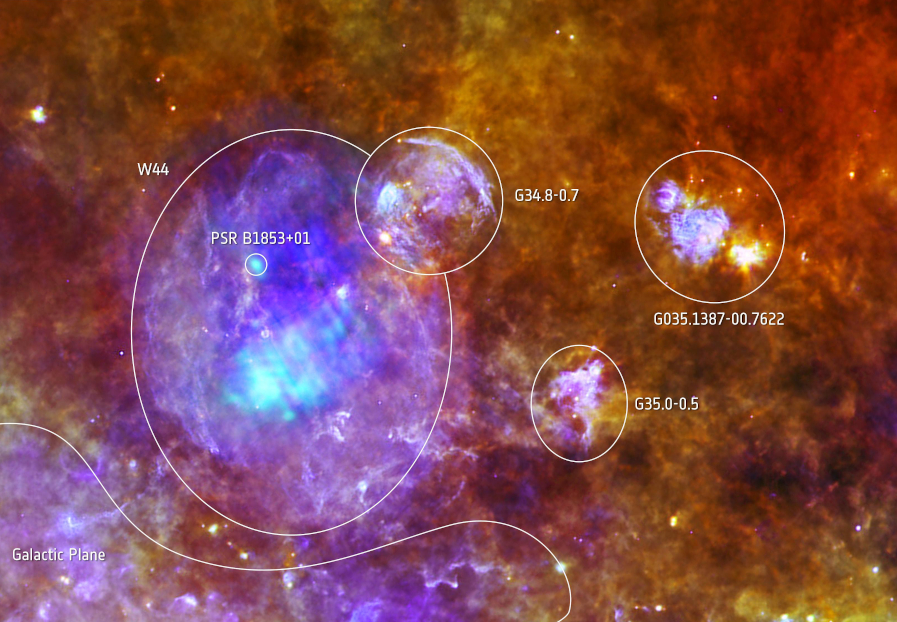
 Credit: ESA/PACS/SPIRE/Luong & Motte, HOBYS Key Program consortium; ESA/XMM-Newton and ESA
Credit: ESA/PACS/SPIRE/Luong & Motte, HOBYS Key Program consortium; ESA/XMM-Newton and ESA
Life and Death Interacting
High-mass stars are usually born in groups buried within dense clouds of gas and dust. Even if these stars form at the same time, they don't all age at the same rate. Lower mass stars age at a leisurely pace, while higher mass stars speed though the complex stages of thermonuclear processing deep within their interiors until they reach the final iron catastrophe and explode as a supernova. These superpowerful supernovae have a tremendous impact on the star-forming cloud, halting star formation in some regions, sparking it in others. One of the best examples of this is the W44 supernova remnant in the constellation of Aquila (the Eagle). The image above shows energetic X-ray emission seen by the XMM-Newton X-ray observatory (in blue) produced about 20,000 years ago by a supernova explosion of some massive star within a star-forming cloud. It also shows lower-energy infrared emisson produced by hot dust, and gas ionized by the intense ltraviolet radiation from young massive stars in the cloud, as seen by the Herschel Space Observatory. Circles highlight W44, and three other ionizded regions to the right of W44, along with emission from the Galactic Plane of the Milky Way in the lower left. Also highlighted is an object marked, PSR B1853+01 which is a rapidly spinning magnetized pulsar, the tiny, leftover compressed core of the star, which produces high energy X-ray radiation.
Published: October 19, 2020
<
HEA Dictionary ● Archive
● Search HEAPOW
● Other Languages
● HEAPOW on Facebook
● Download all Images
● Education ● HEAD
>

Each week the HEASARC
brings you new, exciting and beautiful images from X-ray and Gamma ray
astronomy. Check back each week and be sure to check out the HEAPOW archive!
Page Author: Dr. Michael F. Corcoran
Last modified Monday, 26-Feb-2024 17:47:42 EST


